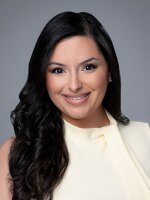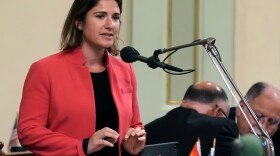Debate over what is called "critical race theory" continues to be a charged topic at school board meetings across the country.
That’s the case in Ramona where the area school board recently banned 10 concepts about race and the inception of this country. Instead, lessons will focus on American Exceptionalism, which has been described as a myth by many scholars. Another popular myth is that critical race theory is being taught in K-12 classrooms across the country.
Critical race theory and ethnic studies are not the same. Critical race theory is a legal framework studied in law school, and ethnic studies is a curriculum taught in schools. California adopted its first statewide ethnic studies curriculum for high schools this year. San Diego Unified has approved a plan to include ethnic studies and anti-racism education in classrooms. Poway Unified will also be teaching ethnic studies this school year.
In a special program, KPBS Midday Edition spoke with three guests who gave their insight into the critical race theory debate and defined the difference between critical race theory and ethnic studies.
Listen to the special here:
What is critical race theory? How is it different from ethnic studies?

Sara Clark Kaplan is a former associate professor of ethnic studies and critical gender studies at UC San Diego, and now the executive director of the Antiracist Research and Policy Center at American University. Here's how she explains what critical race theory is and how it differs from ethnic studies:
"Critical race theory is a much more specific academic movement and body of knowledge. What it does, is it looks into legal and political ideals, policies and structures, things we've taken for granted forever. Things like the Constitution itself, the Bill of Rights, the notion of property, the meaning of equality, the meaning of discrimination. It redefines those terms by understanding that rather than them being value neutral, they've always existed within a framework of race and racism, and white supremacy," Kaplan said.
"Critical race theory ... draws very heavily from the same movements of the '60s and '70s that burst ethnic studies as a field of study -- the Black power movement, the civil rights movement, the women's movement to the liberation movement, Asian American power movement, the American Indian movement," Kaplan said. "At the same time, critical race theory also draws very deeply on its academic roots in legal theory. It's a body of scholarship that emerged in the '70s by a series of very learned legal scholars of color. But the difference is this, ethnic studies truly is about rethinking the history, the sociology, the literary studies, all of the different ways that we learn in schools today through a framework in which we understand that race, power and difference are crucial to how the world works."
Where and to whom is critical race theory taught?

Khiara Bridgesis a UC Berkeley law professor and the author of "Critical Race Theory: A Primer." Here she explains where critical race theory is taught:
"So critical race theory is taught in law schools. Actually in the past couple of years, many law schools have been met with demands by students to offer courses on critical race theory, mandatory courses on critical race theory, which just goes to show that critical race theory isn't part of the core curriculum. It's usually an elective, but it always has been in law schools," Bridges said. "I teach critical race theory. I taught it at Boston University. I taught it at Harvard Law School. I taught at Yale Law. I teach at UC Berkeley School of Law. Notice the theme that unites all those places are law schools. To say that critical race theory is being taught in K-12 schools, which is what conservative activists have been claiming, is to deny what critical race theory is, and is to use that term in a way that is inconsistent with what the authors of the term mean when they say critical race theory, and what the term critical race theory has always meant, again, up until fairly recently."
Diving Deeper into ethnic studies
"Ethnic studies truly is about rethinking the history, the sociology, the literary studies, all of the different ways that we learn in schools today through a framework in which we understand that race, power and difference are crucial to how the world works. So you can teach ethnic studies from a perspective of literature. You can teach ethnic studies from a perspective of art," Kaplan said.

Michael Dominguez, is a San Diego State University professor of Chicano and Chicana studies. He talked to Midday Edition about ethnic studies, and the types of incorrect information about ethnicity and race that have been a standard part of school curriculums.
"Ethnic studies is the focused study of race and power in the United States, particularly from the perspective of historically marginalized people," Dominguez said. "The biggest unfortunate misconception is actually our very definition of race. We're trained and sort of led to believe that race is down to our skin color; and one of the other problems, then, is that leads to a misunderstanding of what racism is. Because racism, as we see in the modern day, though, there are of course, instances of really severe and overt racism still, racism isn't just individual prejudice, it isn't just that overt act of sort of hatred. Racism is stuff that's been sort of woven into the fabric of our community and culture and our institutions for years."
What do you make of where this country is and the resistance to learning about American history?
"I understand this particular historical moment that we're living through in terms of banning thought, banning children's exposure to ideas. I understand it as a direct outgrowth of the racial reckoning that the country began to have last summer after George Floyd was killed in the most public and brutal of ways," Bridges said. "So after Floyds murder, we witnessed these historical movements for racial justice, movements against police violence, movements encouraging us to rethink the penal system or criminal legal system that we have in this country, and people took notice. It wasn't just the folks who had always been aware that racial injustice exists in the U.S. ... But folks who have been relatively sheltered, the folks who live in places where, when they call the police, the police show up and solve the problem, as opposed to causing more problems. Those folks, the protest made sense to them. It didn't seem like radical screaming about a myth that doesn't exist. Rather, it seemed like reasonable people who wanted to live in safety and comfort and to trust the institutions that were designed, at least in theory, to protect them."












